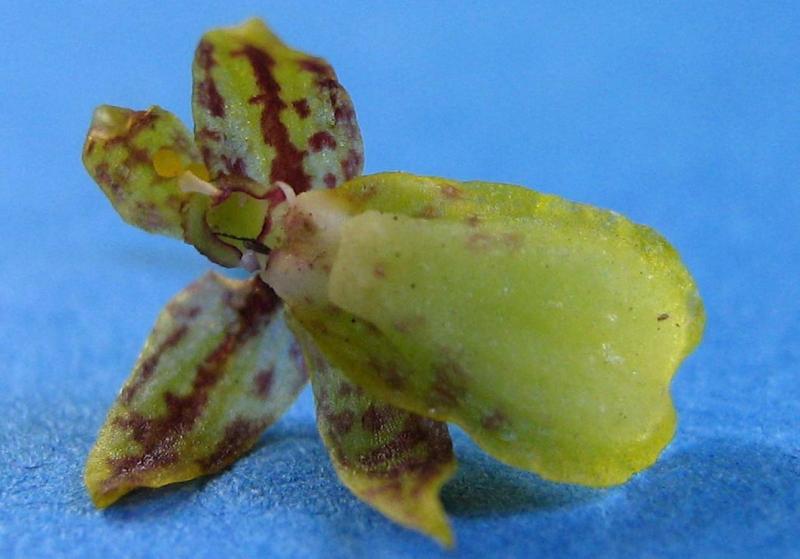Leochilus labiatus
Also known as: The Large or Oncidium salvum Oncidium labiatum Rodriguezia cochlearis Oncidium depauperatum Leochilus cochlearis Leochilus depauperatus Oncidium lansbergii Liparis labiata Leochilus salvus Leochilus gracilis Cyrtochilum depauperatum Epidendrum labiatum in the subfamily: Epidendroideae
Native to: Costa Rica Cuba Departamento del Huila - Colombia Mato Grosso do Sul - Brazil Mexico Nicaragua Parana - Brazil Sao Paulo - Brazil Sergipe - Brazil
General Information
The Large is a miniature sympodial cool to warm growing epiphytic orchid belonging to the sub family Epidendroideae native to Costa Rica, Cuba, Colombia, Brazil, Mexico, and Nicaragua.
Plant Description
Sympodial. Grows to 8-25cm. Each new growth has a single leathery erect, elliptic leaf that grows to 0.5-7cm long. Pseudobulbs grow to 0.8-25cm
Flowers
Numerous fragrant blossoms appear
Fragrance
The orchid is fragrant.
Substrate(s)
- Coarse
Care Notes
These orchids like to be kept on the dry side, but may need to be watered daily during warm weather, and prefer a well draining mix or also do well mounted, provided they can be watered regularly.
These are quite a forgiving orchid, there are no special requirements to get this orchid to flower, just good care and consistent conditions. Larger plants may be more fussy and can react poorly to change; a poorly timed repotting, a pest infection or an unusually hot day can set them back for a couple of years. However, even plants that have been treated poorly can thrive, and if they are set back they often recover much stronger then they would otherwise be.
Fragrant:- IsFragrant
Climate
Grows at low to high elevations. Rainfall ranges from 5mm to 305mm per day, heaviest in September and lightest in February. Humidity ranges from 68% to 85%, highest in October and lowest in March. Temperature ranges from 9C to 21C, highest in May (11C to 21C) and lowest in January (9C to 18C).
Fertiliser
Apply liquid based fertiliser per recommended directions. They can benefit from a high phosphate fertiliser leading up to flowering season, followed by a high nitrogen fertiliser when new growth appears, and a balanced fertiliser in other times. These orchids can also tolerate slow release fertiliser applied 1-2 pellets per cup (250ml) of media.
Use balanced fertiliser during Spring and Summer. Apply fertiliser regularly at half strength year round. Use a high Nitrogen fertiliser during Spring and Summer. Use a high Phosphorous fertiliser during Summer.Potting
Due to the growth nature of these plants they are best mounted onto cork, tree fern slabs, or even trees if the climate suits. Water regularly especially in hot weather.
This plant does very well in baskets or suspended pots This plant does well mounted to Cork slabs. Repotting is best done annually.












